Immersing Preschool Minds: Sensory Crafts Exploration
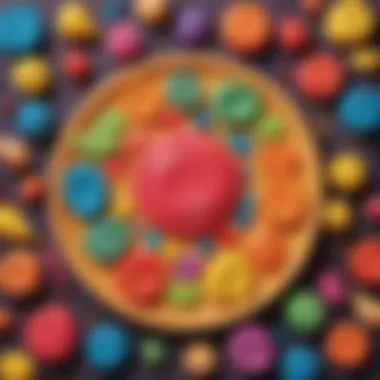
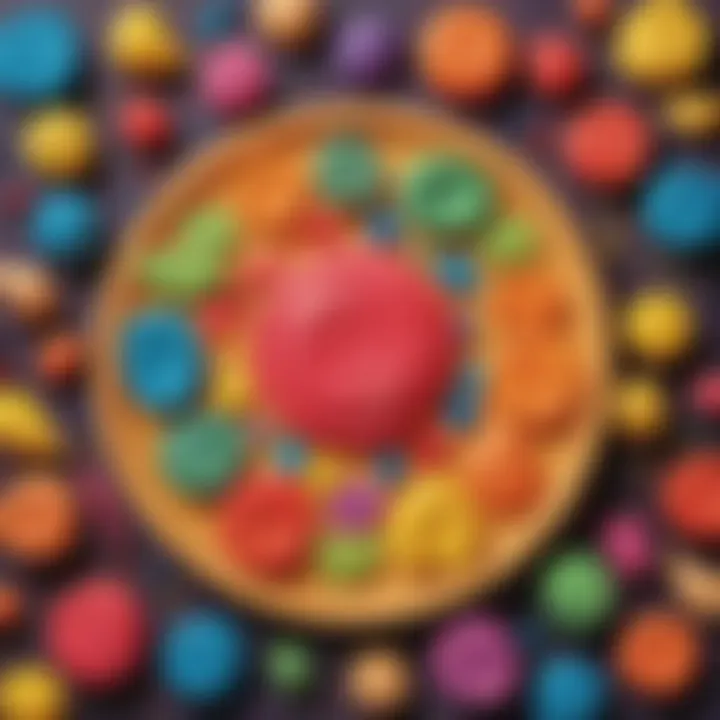
Science Fun Facts
Sensory crafts for preschoolers offer a splendid opportunity to delve into the world of creativity and exploration at a young age. These crafts not only enhance sensory skills but also stimulate cognitive development through hands-on experiences. From squishy textures to vibrant colors, each sensory craft opens a gateway to a world of wonder and imagination.
Discover the Wonders of Sensory Crafts
Educational Benefits of Sensory Crafts
Sensory crafts for preschoolers serve as powerful educational tools, incorporating elements of STEAM (Science, Technology, Engineering, Arts, Mathematics) learning. By engaging in tactile experiences and visual stimuli, children not only enhance their creativity but also sharpen their problem-solving skills. These crafts lay the foundation for a lifelong love of learning and exploration, instilling a sense of curiosity and inquisitiveness in young learners.
Practical Application in Early Childhood Development
The impact of sensory crafts on early childhood development is profound, nurturing vital skills that form the building blocks of future academic success. While engaging in sensory activities, preschoolers enhance their communication skills, language development, and emotional regulation. Furthermore, these crafts promote social interaction and collaboration, fostering a sense of teamwork and empathy among young children.
Crafting Memories Through Sensory Play
Sensory crafts not only stimulate the senses but also create lasting memories for both children and adults alike. The joy of discovery, the thrill of creativity, and the satisfaction of completing a project instill a sense of accomplishment and pride in young learners. Through sensory play, children not only explore the world around them but also discover aspects of themselves, building confidence and resilience for future challenges.
Introduction
In the realm of early childhood education, sensory play holds a pivotal role in nurturing young minds' cognitive, motor, and sensory development. This article embarks on a journey through the enchanting world of sensory crafts specifically curated for preschoolers. By immersing preschoolers in hands-on experiences that engage their senses, caregivers can facilitate a holistic learning environment that sparks curiosity and creativity. Establishing a solid foundation in sensory exploration during the formative years equips children with essential skills that lay the groundwork for future academic and personal success.
The crux of sensory play lies in its ability to stimulate multiple senses simultaneously, providing children with a comprehensive learning experience. Through sensory crafts, preschoolers not only engage their tactile, visual, olfactory, auditory, and gustatory senses but also refine their cognitive processes and fine motor skills. By offering a wide array of sensory experiences, caregivers can cater to various learning preferences and optimize children's overall development. Sensory crafts serve as powerful educational tools that transcend the traditional classroom setting, fostering growth and creativity in a dynamic and interactive manner.
Moreover, incorporating sensory crafts into early childhood curriculum not only enhances academic outcomes but also cultivates a love for learning from a young age. By infusing sensory elements into daily activities, educators can make learning more engaging and memorable for preschoolers. This hands-on approach not only cultivates a deeper understanding of academic concepts but also cultivates key social and emotional skills essential for holistic development. Through intentional and purposeful implementation of sensory crafts, caregivers can create a stimulating learning environment that caters to the diverse needs and learning styles of young children.
The Importance of Sensory Play
Sensory play holds a pivotal role in the holistic development of preschoolers, engaging their senses to forge strong neural connections and enhance cognitive abilities. This article underscores the significance of sensory play as a catalyst for nurturing creativity, cognitive development, and emotional regulation in young children. By immersing preschoolers in sensory experiences, we provide them with a platform to explore, discover, and comprehend the world around them in a tactile, visual, olfactory, auditory, and gustatory manner.
Benefits of Sensory Play for Preschoolers
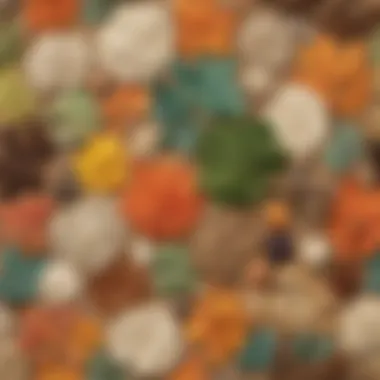
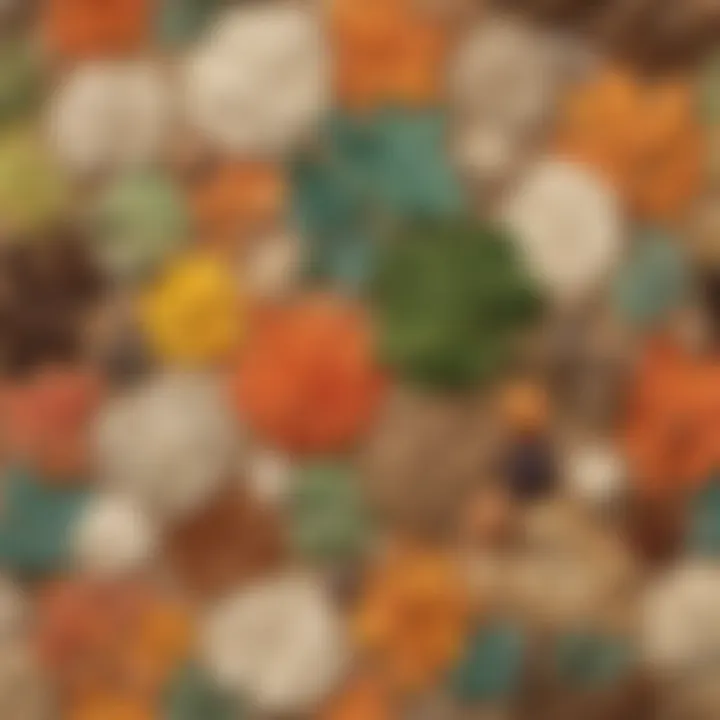
1. Cognitive Development
Delving into sensory play cultivates essential cognitive skills, such as problem-solving, decision-making, and critical thinking. Through hands-on exploration of various textures, colors, and scents, preschoolers sharpen their cognitive abilities by analyzing, categorizing, and making sense of sensory stimuli. This active engagement promotes brain development and enhances memory retention, setting a strong foundation for scholastic achievements in later years.
2. Fine Motor Skills
Sensory play activities, like molding playdough, pouring and scooping rice, or threading beads, are excellent for refining fine motor skills in preschoolers. These intricate movements involving hand-eye coordination and precise muscle control aid in strengthening finger dexterity and grip strength. By encouraging children to manipulate different materials and tools, we support the development of fine motor skills necessary for tasks like writing, drawing, and self-care.
3. Language Development
Immersing preschoolers in sensory experiences ignites their curiosity and sparks verbal communication. As children explore sensory materials, they engage in descriptive dialogue, expressing their thoughts, preferences, and discoveries. This verbal interaction fosters language development by expanding vocabulary, improving articulation, and honing communication skills. Through sensory play, children not only enhance their linguistic capabilities but also learn to convey emotions and ideas effectively.
Benefits of Sensory Crafts for Preschoolers
Sensory crafts play a crucial role in the development of preschoolers, encompassing a myriad of benefits that aid in their overall growth and learning abilities. These crafts are meticulously designed to stimulate the senses of young children, fostering cognitive, fine motor, and language development. Through engaging in sensory activities, preschoolers enhance their creativity, problem-solving skills, and sensory awareness, laying a strong foundation for future learning endeavors.
Cognitive Development
Cognitive development in preschoolers is significantly influenced by engaging in sensory crafts. These activities encourage children to explore textures, colors, and shapes, triggering cognitive processes that aid in memory retention, pattern recognition, and critical thinking skills. By participating in sensory crafts, preschoolers sharpen their cognitive abilities, enhance their ability to focus, and improve their capacity to learn and process information effectively.
Fine Motor Skills
Sensory crafts provide an excellent platform for preschoolers to refine their fine motor skills. Through activities such as manipulating playdough, sorting objects by texture, or pouring and measuring ingredients, children develop hand-eye coordination, finger dexterity, and muscle strength. These intricate movements not only enhance their motor skills but also support their overall physical development, preparing them for more sophisticated tasks in school and daily life.
Language Development
Language development is a fundamental aspect that is nurtured through sensory crafts for preschoolers. Engaging in sensory activities prompts children to communicate their experiences, emotions, and observations, thereby enriching their vocabulary and language skills. Moreover, sensory crafts encourage social interaction, collaboration, and storytelling, which are essential components of language acquisition and literacy development. By immersing in sensory play, preschoolers not only broaden their linguistic capabilities but also cultivate effective communication skills that are vital for academic success and social relationships.
Types of Sensory Crafts
In this segment of '
Tactile Crafts

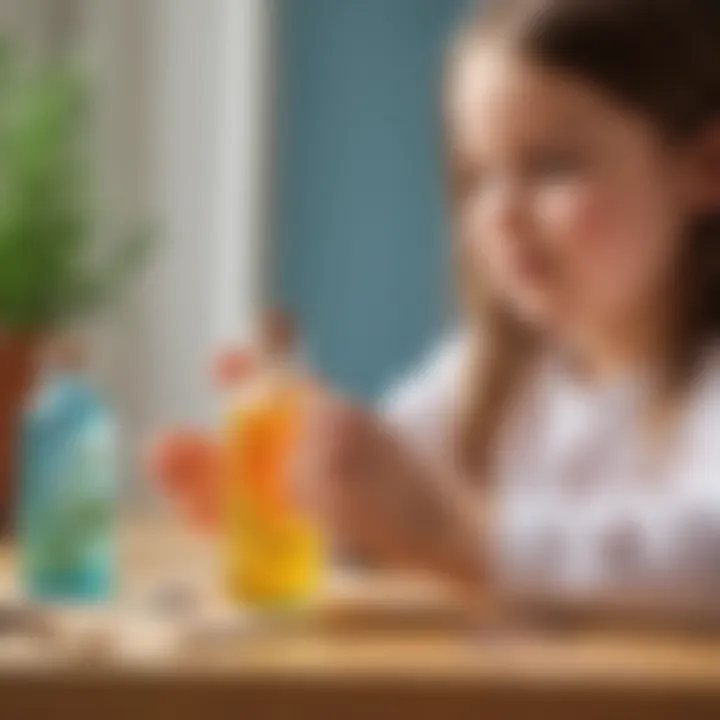
Within the realm of sensory crafts, tactile crafts hold a special importance as they directly engage a child's sense of touch. Tactile crafts encompass activities that involve textures, shapes, and surfaces, providing children with sensory stimuli that aid in developing fine motor skills and cognitive abilities. Through tactile crafts like molding clay, playing with textured fabrics, or exploring different textured materials, preschoolers not only enhance their sensory perception but also improve their hand-eye coordination and dexterity. Tactile crafts also offer children a sensory-rich experience that encourages exploration, creativity, and self-expression. Introducing a variety of tactile crafts can add a multi-dimensional aspect to a child's sensory learning journey, making it a crucial component in early childhood education.
Visual Crafts
Visual crafts play a key role in stimulating a child's visual perception and artistic expression. These crafts involve colors, shapes, patterns, and visual stimuli that spark creativity and imagination in young minds. By engaging in visual crafts such as painting, collage-making, or drawing, preschoolers not only enhance their observational skills but also develop their cognitive abilities and artistic talents. Visual crafts provide children with a platform to express their feelings, ideas, and thoughts visually, fostering their emotional intelligence and communication skills. Introducing a repertoire of visual crafts not only enriches a child's sensory experience but also lays the foundation for a lifelong appreciation of art and creativity.
Olfactory Crafts
Olfactory crafts focus on engaging a child's sense of smell, introducing them to a world of scents and aromas that trigger sensory responses and evoke memories. Olfactory crafts involve activities that incorporate scented materials such as essential oils, herbs, spices, and scented playdough. By engaging in olfactory crafts like scented sensory bottles, scented art projects, or scented sensory bins, preschoolers not only develop their olfactory senses but also enhance their memory retention and cognitive abilities. Olfactory crafts offer children a unique sensory experience that stimulates their brain and enhances their creativity, making them an enriching addition to a child's sensory play repertoire.
Auditory Crafts
Auditory crafts focus on engaging a child's sense of hearing, exposing them to a variety of sounds, rhythms, and auditory stimuli. Auditory crafts involve activities that incorporate music, sounds, and auditory experiences to stimulate a child's auditory perception and cognitive development. By engaging in auditory crafts like creating sound jars, musical instruments, or storytelling with sound effects, preschoolers not only sharpen their listening skills but also enhance their language development and communication abilities. Auditory crafts provide children with an immersive sensory experience that nurtures their auditory senses, fosters creativity, and boosts their overall cognitive development. Introducing auditory crafts into a child's learning environment can enrich their sensory play experience and create a vibrant atmosphere for learning and exploration.
Gustatory Crafts
Gustatory crafts revolve around engaging a child's sense of taste, introducing them to a variety of flavors, textures, and taste experiences. Gustatory crafts include activities that involve tasting different foods, creating edible crafts, or exploring taste sensations through sensory play. By engaging in gustatory crafts like making edible art, sensory taste tests, or cooking activities, preschoolers not only enhance their sense of taste but also improve their fine motor skills and cognitive development. Gustatory crafts offer children a tactile and sensory-rich experience that encourages them to explore new tastes, textures, and flavors, fostering their culinary curiosity and creativity. Introducing gustatory crafts as part of a child's sensory learning journey can broaden their culinary horizons, enrich their sensory play experiences, and encourage healthy eating habits in a fun and interactive way.
DIY Sensory Craft Ideas
Imagine a world where young minds are nurtured through the captivating realm of DIY Sensory Craft Ideas. Within the scope of this article, these craft ideas hold significant value, serving as conduits for not only fostering creativity but also enhancing sensory skills in preschoolers. The intricacies of DIY Sensory Craft Ideas go beyond mere entertainment; they provide a hands-on platform for children to explore, experiment, and learn.
1. Kinetic Sand Sensory Bins
In the vast landscape of sensory crafts lies the intriguing concept of Kinetic Sand Sensory Bins. These bins are more than just containers filled with sand; they serve as dynamic outlets for children's tactile experiences. As little hands delve into the soft, moldable sand, they engage their senses, promoting sensory awareness and fine motor skills. The rhythmic flow of kinetic sand offers a mesmerizing experience, encouraging endless creativity and a unique sensory journey.
2. Scented Playdough Creations
Embark on a fragrant adventure with Scented Playdough Creations, where preschoolers can immerse themselves in a world of olfactory delight. The amalgamation of vibrant colors and enticing scents not only stimulates the senses but also encourages imaginative play. Crafting scented playdough allows children to explore different aromas, fostering sensory exploration and expressive creativity. From calming lavender to zesty citrus, each scent ignites a new realm of sensory perception.
3. Rainbow Rice Exploration
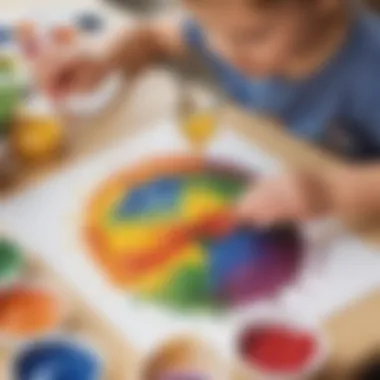
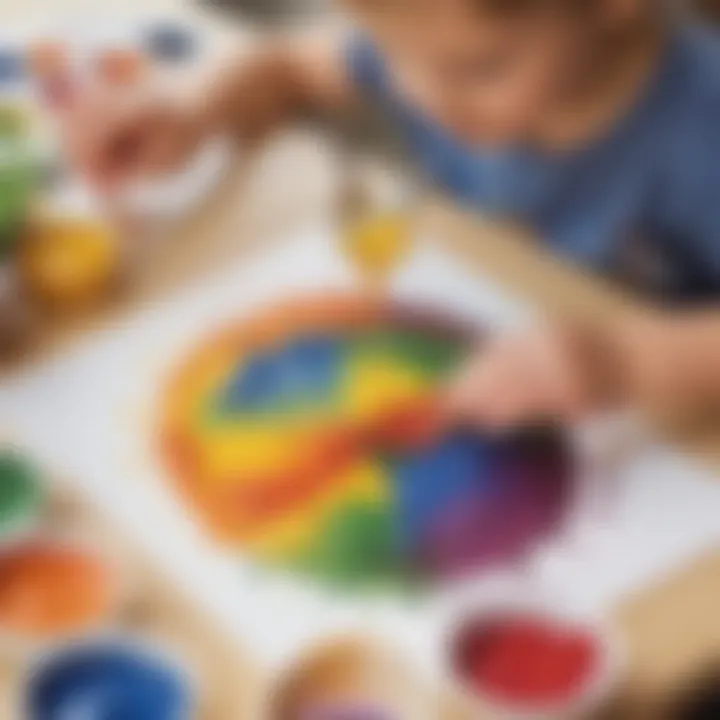
Dive into the vivid spectrum of colors with Rainbow Rice Exploration, a visually stimulating sensory craft for preschoolers. By dyeing rice in a myriad of hues, children are introduced to a kaleidoscope of colors that captivates their visual senses. The texture of the rice provides a unique tactile experience, enhancing sensory development and cognitive skills. Through sorting, pouring, and scooping colorful rice, young learners refine their fine motor abilities and color recognition, creating a multi-dimensional sensory journey.
4. Sensory Nature Collage
In the realm of sensory crafting, the Sensory Nature Collage stands as a tribute to the beauty of the natural world. Combining elements from nature such as leaves, flowers, and twigs, children engage in a tactile and visual symphony. The varied textures and shapes of natural materials not only stimulate sensory exploration but also connect young minds to the wonders of the outdoors. As children arrange and create their unique collages, they develop an appreciation for nature's aesthetic diversity, fostering a bond between creativity and sensory awareness.
Incorporating Sensory Crafts into Early Learning Curriculum
In the realm of preschool education, the integration of sensory crafts into the early learning curriculum stands as a pivotal strategy to enrich children's educational journey. By infusing sensory experiences into the educational framework, educators can harness the power of hands-on activities to deepen learning outcomes. These sensory crafts play a dual role, not only fostering academic growth but also nurturing essential life skills in young learners. Through carefully curated activities that engage multiple senses, children can develop a holistic understanding of the world around them. This section will delve into the significance of embedding sensory crafts in the early learning curriculum, exploring the diverse benefits and considerations that come with this immersive educational approach.
Sensory Enrichment for Comprehensive Learning
At the core of incorporating sensory crafts lies the profound impact on children's overall cognitive development. By delivering content through experiential activities that involve touch, sight, smell, sound, and taste, educators can cater to diverse learning styles and preferences. These multi-sensory experiences create lasting impressions on young minds, facilitating deeper engagement with educational concepts. By immersing children in hands-on activities that stimulate their senses, educators can enhance memory retention and comprehension, paving the way for a more profound grasp of core academic subjects.
In addition to fostering academic growth, sensory crafts also play a critical role in honing fine motor skills in preschoolers. Through activities that require manipulation of materials, such as molding clay or threading beads, children can refine their hand-eye coordination and dexterity. These foundational motor skills serve as building blocks for future academic and practical pursuits, setting children on a path towards greater independence and success. By seamlessly integrating sensory crafts into the early learning curriculum, educators can cultivate well-rounded individuals equipped with a diverse skill set.
Tailoring Curricular Content for Engaging Learning
Incorporating sensory crafts into the early learning curriculum necessitates a thoughtful approach to content design and delivery. Educators must tailor activities to align with curriculum objectives while ensuring a seamless integration of sensory elements. By incorporating tactile, visual, olfactory, auditory, and gustatory stimuli into lesson plans, educators can create a dynamic learning environment that resonates with young learners. This tailored approach not only enhances children's academic performance but also fosters a deep-seated love for learning and exploration.
Moreover, the incorporation of sensory crafts into the curriculum requires careful consideration of individual learning needs and preferences. Educators must create a balanced mix of activities that cater to various sensory preferences, ensuring an inclusive and immersive educational experience for all students. By providing children with a diverse range of sensory stimuli, educators can address different learning modalities, allowing each child to thrive and excel in their educational journey. Through meticulous planning and innovative content design, educators can elevate the early learning experience, creating a fertile ground for academic growth and personal development.
Enhancing Parent-Child Bond Through Sensory Crafting
In the realm of preschooler development, the critical linkage between parent and child transcends mere proximity, evolving into an intricate dance of bonding and growth. Facilitating this synergy, sensory crafting emerges as a veritable catalyst, nurturing not only the child's cognitive and motor skills but also fostering a deeper connection between parent and offspring. Through shared sensory experiences, parents can partake in their child's world, gaining invaluable insights into their preferences, reactions, and budding interests.
As parents delve into the realm of sensory crafting with their preschoolers, a myriad of benefits unfold before their eyes. Beyond the obvious educational value encapsulated in sensory activities, the emotional contours of the parent-child relationship undergo enriching transformation. With each tactile exploration and color-mixing escapade, bonds are reinforced, trust is solidified, and communication barriers are dismantled. The very act of engaging jointly in a sensory craft project lays the foundation for open dialogue and shared experiences, paving the way for a deeper understanding and connection between parent and child.
Within the context of enhancing the parent-child bond through sensory crafting, it is paramount to consider the dual nature of the interactions taking place. While the child's sensory development receives a significant boost through hands-on exploration, the parent's role as a guide and collaborator becomes equally pronounced. This dual agency allows for a reciprocal exchange of emotions, ideas, and discoveries, creating a harmonious ecosystem where both parties contribute to and benefit from the sensory crafting experience. By leveraging these shared moments of creativity and discovery, parents can seize the opportunity to not only bond with their child but also instill a sense of confidence, autonomy, and self-expression in the young crafter.
In the intricate tapestry of parent-child relationships, the thread of sensory crafting weaves a pattern of shared memories, mutual growth, and profound understanding. Each brushstroke of creativity, each squish of playdough, and each sparkle of glitter serve as markers of togetherness, encapsulating the essence of bonding through sensory exploration. As parents immerse themselves in the sensory crafting journey alongside their preschoolers, a symphony of shared discoveries and joyful moments unfolds, building not just crafts but everlasting connections that transcend the confines of time.
Conclusion
One of the primary benefits of sensory crafting is the positive impact it has on cognitive development. Through activities like creating kinetic sand sensory bins or engaging with scented playdough creations, children are actively enhancing their cognitive abilities. These experiences stimulate curiosity, problem-solving skills, and the ability to think critically – essential skills that form the foundation for academic achievement and lifelong learning.
Moreover, sensory crafting significantly contributes to the refinement of fine motor skills. The intricate movements required in tasks such as exploring rainbow rice or carefully placing items in a sensory nature collage aid in improving hand-eye coordination and manual dexterity. These activities are not just fun; they are fundamental in laying down the groundwork for more complex tasks like writing, drawing, and other activities that necessitate precise motor control.
Furthermore, language development is another area greatly influenced by sensory crafting. As children engage with different materials, textures, and sensory stimuli, they are encouraged to verbalize their experiences, describe what they feel, see, hear, and smell. This verbal expression not only enriches their vocabulary but also refines communication skills, fostering the ability to express themselves clearly and confidently.







